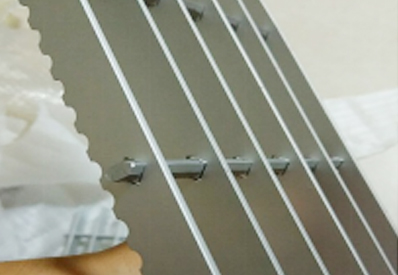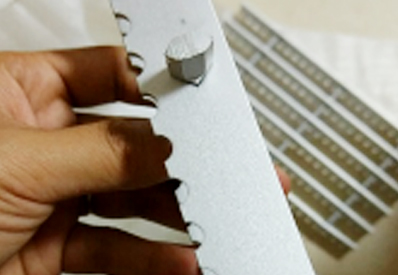Anodic oxidation, electrochemical oxidation of metals or alloys. Aluminum and its alloys form an oxide film on aluminium products (anodes) under the action of applied current in the corresponding electrolyte and specific process conditions. Anodic oxidation, if not specified, usually refers to sulfuric acid anodic oxidation.
In order to overcome the defects of surface hardness and wear resistance of aluminium alloy, expand its application scope and prolong its service life, surface treatment technology has become an indispensable part in the use of aluminium alloy, and anodizing technology is the most widely used and successful technology at present.
principle
edit
The so-called anodic oxidation of aluminium is an electrolytic oxidation process, in which the surface of aluminium and aluminium alloys is usually transformed into an oxide film, which has protective, decorative and some other functional properties. The anodic oxidation of aluminium based on this definition only includes the process of forming anodic oxide film.
An oxide film was formed on the surface of metal or alloy parts by electrolysis. Metal oxide films change the surface state and properties, such as surface coloring, improving corrosion resistance, enhancing wear resistance and hardness, and protecting metal surface. For example, aluminium and its alloys are anodized in corresponding electrolytes (such as sulphuric acid, chromic acid, oxalic acid, etc.) under specific conditions and applied current. A thin layer of alumina is formed on the surface of anodic aluminium or its alloys. Its thickness is 5-30 microns, and the hard anodic oxide film can reach 25-150 microns. The hardness and wear resistance of the anodized aluminium or its alloys are improved, reaching 250-500 kg/m2, with good heat resistance. The melting point of the hard anodic oxide film is up to 2320K, excellent insulation, breakdown voltage is up to 2000V, which enhances the corrosion resistance and does not corrode for thousands of hours in_=0.03NaCl salt spray. There are a large number of micro-holes in the oxide film, which can absorb various lubricants. It is suitable for making engine cylinders or other wear-resistant parts. The film micro-holes have strong adsorption ability and can be colored into various beautiful colors. Nonferrous metals or their alloys (such as aluminium, magnesium and their alloys) can be anodized. This method is widely used in mechanical parts, aircraft and automobile parts, precision instruments and radio equipment, daily necessities and architectural decoration. [1]
Generally speaking, the anode is made of aluminium or aluminium alloy. The cathode chooses lead plate and puts aluminium and lead plate together in an aqueous solution. There are sulphuric acid, oxalic acid, chromic acid and so on, which can be electrolyzed to form an oxide film on the surface of aluminium and lead plate. Among these acids, sulfuric acid is the most widely used anodic oxidation.
报错




 +86-13173055063 / +86-18653181659
+86-13173055063 / +86-18653181659
 www.aimigrating.net
www.aimigrating.net
 sales@aimigrating.com
sales@aimigrating.com
 0531-88765975
0531-88765975
 Xingquan industrial area,kaiyuan road,lichen zone,Jinan,Shandong,China
Xingquan industrial area,kaiyuan road,lichen zone,Jinan,Shandong,China